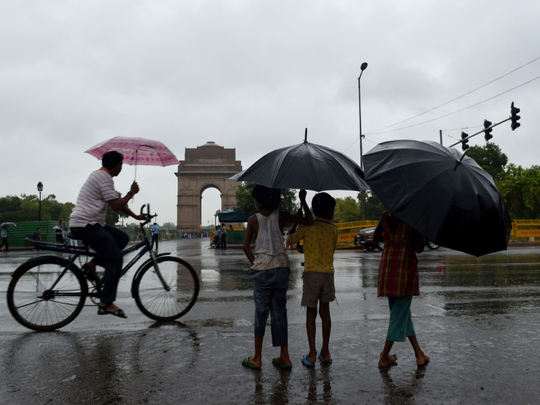
Patna: There is consensus among doctors, health officials and parents that the monsoon season helps reduce cases of Acute Encephalitis Syndrome (AES) in Bihar’s Muzaffarpur district, where 154 children have died from the disease so far.
Gopal Shankar Sahni, Head of Department of Paediatrics at the government-run Sri Krishna Medical College and Hospital (SKMCH) in Muzaffarpur, said the number of new cases of AES reported in the last few days dropped drastically due to rains that cool down the atmosphere.
After 132 children died of AES in Muzaffarpur in June, doctors and heath officials are still in the dark about what the disease is and the cause of death. The state and central governments are also clueless.
A health official said the disease is yet to be identified, and its cause remains unknown despite research undertaken by national and international medical experts in the past.
But one thing is clear: the rain will keep the disease in check.
“Dozens of children were brought in the hospital before rains hit Muzaffarpur on June 22. After that, hardly a child has died in a day, unlike before,” another SKMCH doctor said.
Doctors and health officials say that extremely hot weather along with humidity has triggered the outbreak of AES in Muzaffarpur annually for more than two decades. They claim that pre-monsoon and monsoon rains is the last and only hope to fight the disease.
A study conducted by researchers at the Central University of South Bihar said that AES is directly link to humidity and temperature, and once the rain starts, the number of cases starts declining.
Sahni said the monsoon rains provide relief to children suffering from the disease and will help suppress the virus.
He was supported by Regional Additional Health director Dr Ashok Kumar Singh, based in Muzaffarpur.
“Three H — heat wave, humidity and hypoglycemia [low blood sugar] — are causing deaths of children who are suffering from symptoms akin to AES. Rains are necessary to reduce the temperature... it will reduce the affect of the disease,” Singh said.
According to another senior doctor, fewer deaths from the disease were reported in 2018, 2017 and 2016 as the weather was neither extremely dry hot, nor very humid like this year.
“There were at least light pre-monsoon rains in May and early June, unlike this year that helped the outbreak of the disease,” he said.
Rajiv Kumar, a doctor at Kejriwal Hospital in Muzaffarpur, said it is a fact that monsoon rains control the disease, and scorching heat and humidity spread it.
Doctors treating children said the outbreak of AES happened when temperatures rose above 42 degrees Celsius in the summer. In such a condition, the child’s body temperature would shoot up and he or she may face convulsion and weakness.
“We were praying for monsoon rains, only rain God can save our children,” Kali Ram, father of a four-year-old child who is fighting for life at the hospital in Muzaffarpur, said.
Most of the victims of AES belong to poor and marginalised sections, including Dalits, Other Backward Classes (OBCs), Economically Backward Classes (EBCs) and Muslims.
“AES victims are mostly the malnourished children from underprivileged sections of society, they are from categories below the poverty line”, said a district health official in Muzaffarpur.
After Chief Minister Nitish Kumar visited Muzaffarpur, the government has ordered a survey in blocks and villages which reported high death toll to study the socio-economic profiles of the affected families and their living conditions.
Initial data compiled by the survey team pointed poverty, malnourishment and poor living conditions as the background of most of the families affected by AES.
So far 720 cases of AES have been reported from 23 districts of the state this year, of which 602 are from Muzaffarpur.












